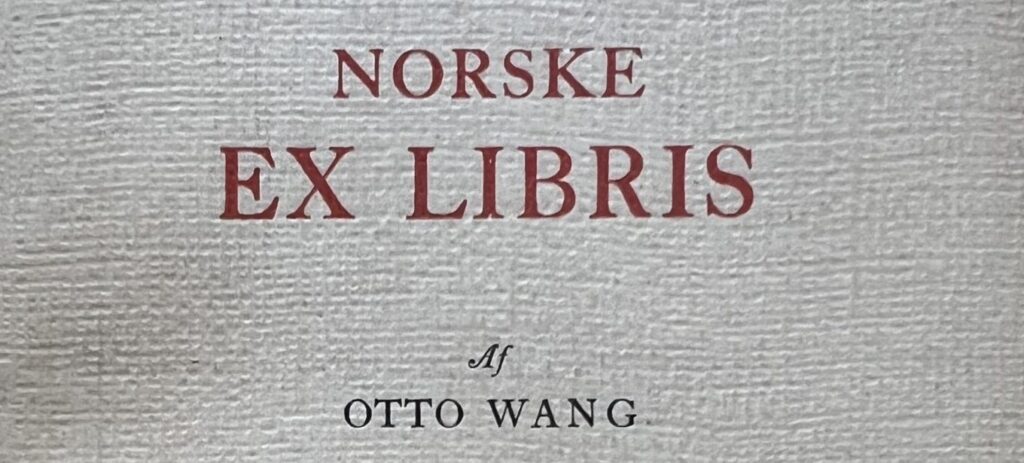Think about the last time you got a new video game. The ritual is a familiar one. You watch the cinematic trailers, read the early reviews, and track the release date. Maybe you feel the satisfying heft of a physical box in your hands, or perhaps you watch the steady progress of a digital download. You finally launch it. At what point in this process does the “game” actually begin? Is it when the first company logo splashes across the screen? When you press the ‘Start’ button? Or is it only when you finally gain direct control of your character, free to move and act in a new world?
This question isn’t as simple as it sounds. The experience of a game doesn’t just switch on; it unfolds. It begins long before that first moment of control, shaped by a complex and often invisible web of materials that surround and present the game to us. Scholars call this space the game’s “threshold,” and exploring it reveals some surprising truths about how we experience our favorite video game titles.
1 – You’re Experiencing the Game Long Before You Control a Character
The introduction to a modern video game is not a simple preamble; it is a highly structured, multi-layered experience designed to gradually immerse you and, more importantly, to teach you how to see, what to value, and how to behave in its world long before you are granted freedom. This process is so familiar that we rarely notice its intricate design, but a closer look can produce a powerful “estrangement effect,” making the mundane feel strange and deliberate.
Consider the opening of BioShock Infinite. One researcher, in a detailed auto-ethnographic breakdown, identified 26 distinct stages she passed through before gaining full gameplay control. This journey was not just a series of loading screens; it was a slow, deliberate process of indoctrination:
- Logos and Legalese (Stages 1-3): Before anything else, the player is presented with the non-interactive logos of the publisher (2K Games), the developer (Irrational Games), and the game engine (Unreal Engine), establishing the authorities behind the experience.
- Menus and Calibration (Stages 4-8): The player is invited to interact, but only in a highly constrained way—adjusting brightness, setting screen margins, and navigating menus that exist entirely outside the game’s fictional world.
- Narrative Framing (Stages 10-11): Control is withheld as the game establishes its tone through a cryptic epigraph (“The mind of the subject will desperately struggle to create memories where none exist…”) and an equally cryptic voice-over dialogue, setting the terms of the story to come.
- Ceded Control (Stage 13): The first moments inside the game’s world place the player in a rowboat, but agency is illusory. You can look around, but all meaningful actions are either automated or triggered by a single button press that initiates a cut-scene.
This entire sequence is a carefully constructed “zone of transition” that eases a player from our world into the virtual one by slowly and methodically handing over the reins. It shows that the line between “not playing” and “playing” is incredibly blurry. Where does the game truly begin? This question is so difficult that even academics find it profoundly ambiguous.
So far, these unclassified entities—as well as their relation(s) to ‘the game’—constitute “a treasure trove of questions without answers” (Gerard Genette, Palimpsests: Literature in the second degree (C. Newman & C. Doubinsky, Trans.). Lincoln, NE: University of Nebraska Press. 1997, p. 3).
2 – There’s a Silent Battle Over How You Play the Game
For every game, a silent battle is waged not just for control, but for meaning itself. This is a struggle between the official, developer-sanctioned materials that present a sanctioned truth, and the unofficial, fan-made universe that offers heresies, alternative paths, and player-centric truths.
The literary theorist Gérard Genette coined the term “paratext” to describe materials that are functionally subservient to a main work and, crucially, are authorized by its creators. In gaming, the paratext includes the official elements designed to shape your experience: the instruction manual, the box art, loading screen tips, and official strategy guides. These elements present the developer’s vision, the “correct” way to see and play the game.
But this is only half the story. To account for the vast ecosystem of unauthorized content, one researcher proposes a new category: “quasi-paratext elements.” These are the materials that exist outside the creator’s direct control, where players contest the game’s authority and forge their own interpretations. While an official guide presents the intended path, an unofficial one might “tell a different story” or “offer different, unorthodox… approaches.”
The distinction is not merely academic; it’s about whose story gets told. For a perfect, concrete example, look no further than the BioShock Infinite Mega Guide, an unofficial strategy guide that explicitly states in its own paratext, “The author has no affiliation with the creator of this game.” This simple disclaimer marks the battle line. The game’s creators use the official paratext to guide and control the player’s journey, while players and third parties use the quasi-paratext to create tools and interpretations that exist completely outside that authorized bubble. These unofficial materials have become foundational to the modern gaming experience.
Obviously, this variety of ‘peripheral’ practices and products is “integral to the digital game industry” and the players’ activities and experiences, and thus “critical to consider as a way to understand gameplay as well as the business of digital games” (Mia Consalvo, Cheating: Gaining advantage in videogames. Cambridge, MA: The MIT Press. 2007, p. 182).
3 – The “Author” of a Game Isn’t Dead, Just Bigger
A common but misleading argument is that video games, with their massive teams of hundreds, have no “author.” This idea, while understandable, ignores the concrete legal and functional reality of how creative works are produced and owned in the modern world.
While there may not be a lone romantic figure in a garret, there is a legally and functionally defined “production collective”—the studio and the publisher—that, for all intents and purposes, is the author. This collective holds the copyright, bears the legal responsibility for the product, and wields the power to authorize its official presentation to the world.
It is this collective that decides what is and is not part of the game’s official paratext. This act of authorization is the bright line that separates an official, licensed strategy guide from a fan-made wiki, or a developer’s commentary from a player’s YouTube review. This is not an abstract theory; it’s a commercial and legal fact. To satisfy the public’s “desire for an author,” the industry will often position a single figure like BioShock Infinite’s creative director, Ken Levine, as the singular creative ‘Auteur.’ But behind this marketing lies the legal and functional truth of the collective. Authorship in gaming is not dead; it has simply scaled.
“The author and the publisher are (legally and in other ways) the two people responsible for the text and the paratext” (Gerard Genette, Paratexts: Thresholds of interpretation (J. E. Lewin, Trans.). New York: Cambridge University Press, 1997, p. 9).
4 – To Understand Games Better, We Need Better Words
For years, new media scholars have used the term “paratext” as a vague catch-all for everything that surrounds a game, leading to significant conceptual confusion. This culminated in the “blurred boundaries objection,” most famously articulated by Peter Lunenfeld, who argued that it’s impossible to distinguish the “text” (the game) from its “paratext” in digital media because it’s all just “streams of data.”
This objection, however, rests on a fundamental misunderstanding. As the author of Video Game Framings sharply retorts, “According to this logic, one might also say that it is impossible to tell the island from the ocean because everything is made of ‘the same stream’ of atoms.” The argument collapses a crucial difference in scale and function. Bits are bits, but our conceptual tools must operate on a higher level to be useful.
To cut through this messy debate, a far more precise and elegant solution has been proposed, one that brings clarity to how we talk about games. It involves two key steps:
- Make “Paratext” More Specific. Instead of a catch-all, the term “paratext” should be restricted to messages that are verbal, authorized by the production collective, functionally subservient to the game, and at least partly extra-diegetic (existing outside the game’s fictional world, like a menu or loading screen text).
- Introduce a Broader Term: “Framings.” For everything else—the musical score, the iconic key art, fan-made videos, cheat devices, and even the color of the DVD case—we should use the more inclusive umbrella term “framings.” This term correctly identifies that all these diverse elements “frame” our perception of the game, without lumping them into one imprecise category.
So, in this sharper model, the official strategy guide and the text on a loading screen are ‘paratexts.’ The iconic box art, the musical score, and a fan’s YouTube walkthrough are all ‘framings.’ The first category is about official, verbal instruction; the second encompasses everything else that shapes our perception. This precision isn’t just academic nitpicking; it provides us with the vocabulary to analyze how these distinct forces work together to shape our experience.
Accordingly, Wolf (Wolf, Werner, Framing fiction: Reflections on a narratological concept and an example: Bradbury, Mensonge. In W. Grünzweig & A. Solbach (Eds.), Grenzüberschreitungen: Narratologie im Kontext. (pp. 97–124). Tübingen: Narr Verlag, 1999, p. 108) has argued “the problem of Genette’s notoriously hazy definition of ‘paratexts’ [sic] can be alleviated by qualifying them [sic] as verbal.”
Conclusion: Passing the Threshold
The experience of a video game is far richer and more complex than what happens after you press ‘Start.’ It extends into a vast network of materials that surround, introduce, and interpret the “game proper.” From the highly structured introductions that indoctrinate us into a world, to the silent battle over meaning fought between official guides and fan-made wikis, to the powerful legal reality of the authorial “production collective,” the world around a game is as important as the world within it. By developing a sharper language to talk about these elements, we can better appreciate the intricate machinery that shapes our play.
The next time you start a new game, what will you notice about its ‘thresholds’ and ‘framings’ that you never saw before?
Read the full article: Annika Rockenberger: Video Game Framings. Chapter 13 in: Examining Paratextual Theory and its Applications in Digital Culture. Ed. by Nadine Desrochers, Daniel Apollon. Hershey: IGI Global 2014, p. 252–286. DOI: 10.4018/978-1-4666-6002-1.ch013 – full text (paywall) here, and the book here, or request a digital copy of the chapter by writing an email to me!
This blog post was entirely generated using ‘artificial intelligence’, specifically the Notebook LM generator in a closed version hosted by the University of Oslo. The single input was my original 2015 book chapter titled “Video Game Framings” in its published form, as a PDF with footnotes/endnotes. Notebook LM was then used to generate a blog post, a report style pre-set, without any further promting. The text was generated on Oct 27th, 2025, as an exercise during a mandatory training workshop on Large Language Models and generative AI for the University Library staff.
Video Game Framings is my single most requested and cited article. It has first been published as part of an anthology on Paratexts (IGI Global 2015) and then been republished by IGI Global in a compendium on Game Studies. Usually hidden behind a rather expensive paywall, I offer to send a PDF of my article to any scholar or student who requests it: no one needs to pay to get to read it! If you are interested in the article, send me an email to my official email address.



